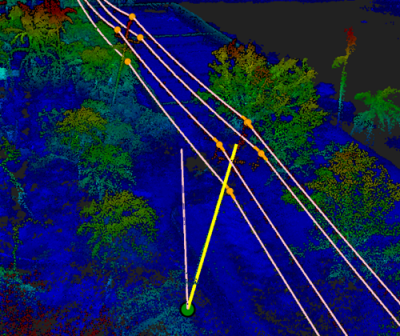There’s been speculation for the last 18 months to two years that maybe laser scanning isn’t just for early adopters anymore, but how to tell? Well, here’s an example of an article that came across my desk this week that seems like confirmation to me.
It was published in Constructech Magazine: Laser Scanning Takes Off.
I mean, seriously, what could be more clear? You’re all set, manufacturers and service providers! Yes, I’m joking to some extent. Really, what does “takes off” mean, and what is Constructech’s evidence? Sales numbers? A survey of its readership? Let’s take a look:
A big trend as of late in the construction industry is the use of laser scanning in the BIM (building information modeling) process. It is one thing to design multifaceted structures in the office; it is a whole different story to go out in the field and build them. Laser scanning allows construction teams to measure quickly and accurately based on the model.
I’m not 100 percent sure that last sentence makes any sense, but it’s good to hear that laser scanning is a big trend in BIM from Constructech’s perspective, since much of the feedback I’m getting is that as-built BIM is still relatively rare and that there’s a fair amount of frustration on the part of laser scanning service providers that more BIM types don’t see the value of as-built data in the BIM process. That’s one reason why our scan-to-BIM content on the site and at the conferences generates so much interest – there’s a ton of education to be done on that front still – but maybe that’s changing.
Let’s keep going:
While commercial building contractors are beginning to look at the technology as a tool to help build in the field what was created in the office, construction companies targeting the infrastructure segment of the business have likely already used or considered laser scanning for roads, bridges, and other infrastructure construction projects.
One example comes from CalTrans (California Dept. of Transportation), www.dot.ca.gov, Los Angeles, Calif., which is the state agency responsible for highway, bridge, and rail transportation planning, construction, and maintenance in California.
Is CalTrans a construction company? I’m not sure a government agency is the best way to illustrate this new laser scanning trend in the BIM world, but I’ll roll with it.
While laser scanning is still relatively new at CalTrans, the organization is already seeing widespread adoption by internal customers for digital-terrain models. Two high-profile projects using the technology include the San Francisco-Oakland Bay Bridge seismic safety reconstruction and the Presidio Parkway.
Internal customers of CalTrans? The people who work there? Other state agencies? Municipalities? Outside contractors? I’m confused. Maybe the next paragraph will help.
How does laser scanning work? At its core, a 3D scanner can collect critical data points at a jobsite, identifying the distance of a surface. On the Bay Bridge project, laser scanners are used as the bridge’s SAS (self-anchored suspension span) is loaded with weight to ensure tolerances aren’t being exceeded. On the Presidio Parkway project, laser scanning is used to preserve historic structures and complete design surveys for safety in high-traffic areas.
I ask that question all the time, myself: “What’s the distance of that surface?” Sorry. Couldn’t help myself. What’s important here is that a vertical trade publication serving the construction industry is treating laser scanning like something that they absolutely have to inform their readers about. Maybe they’re not 100 percent sure exactly what’s going on with the technology themselves, but they see so much chatter about it, and it’s coming up in their Google feeds so often, that they feel like they need to pass an item like this along. Look how they finish up:
Laser scanning is certainly a trend to keep an eye on in the construction industry. The technology can serve a wide range of contractors—not just in the infrastructure segment—and can be used to increase accuracy of building structures in the field.
Wait a second: I thought laser scanning was taking off. Or had already taken off. The evidence for that is that CalTrans is currently using it on a couple of projects? Again, this is a good thing. They don’t feel like they need to provide much evidence – I mean, of course it’s taking off. They’re worried about looking like they don’t know about the next big trend in construction, so they’re getting something out there showing that of course they’re all over it. That’s an excellent sign for adoption of the technology by the wider base of that industry.
I’m starting to see these kinds of articles in the forensic trade journals; the offshore industry trade journals; the engineering trade journals; archaeology trade journals. As the technology becomes more widely understood and utilized, it’s bleeding out into other industries the way it’s been taken up whole-heartedly by the surveying trade journals like American Surveyor and Point of Beginning, who’ve both gone so far as to launch laser scanning focused ancillary products in Lidar News and GeoDataPoint.
Do you still feel like the only person in your field using laser scanning? Or are their loads of you now? Is the SPAR readership still filled with only early adopters, or are some of you the types of people who take a wait and see approach and you’ve waited, you’ve seen, and you’ve come on board?
I’m seeing a lot of the latter.





